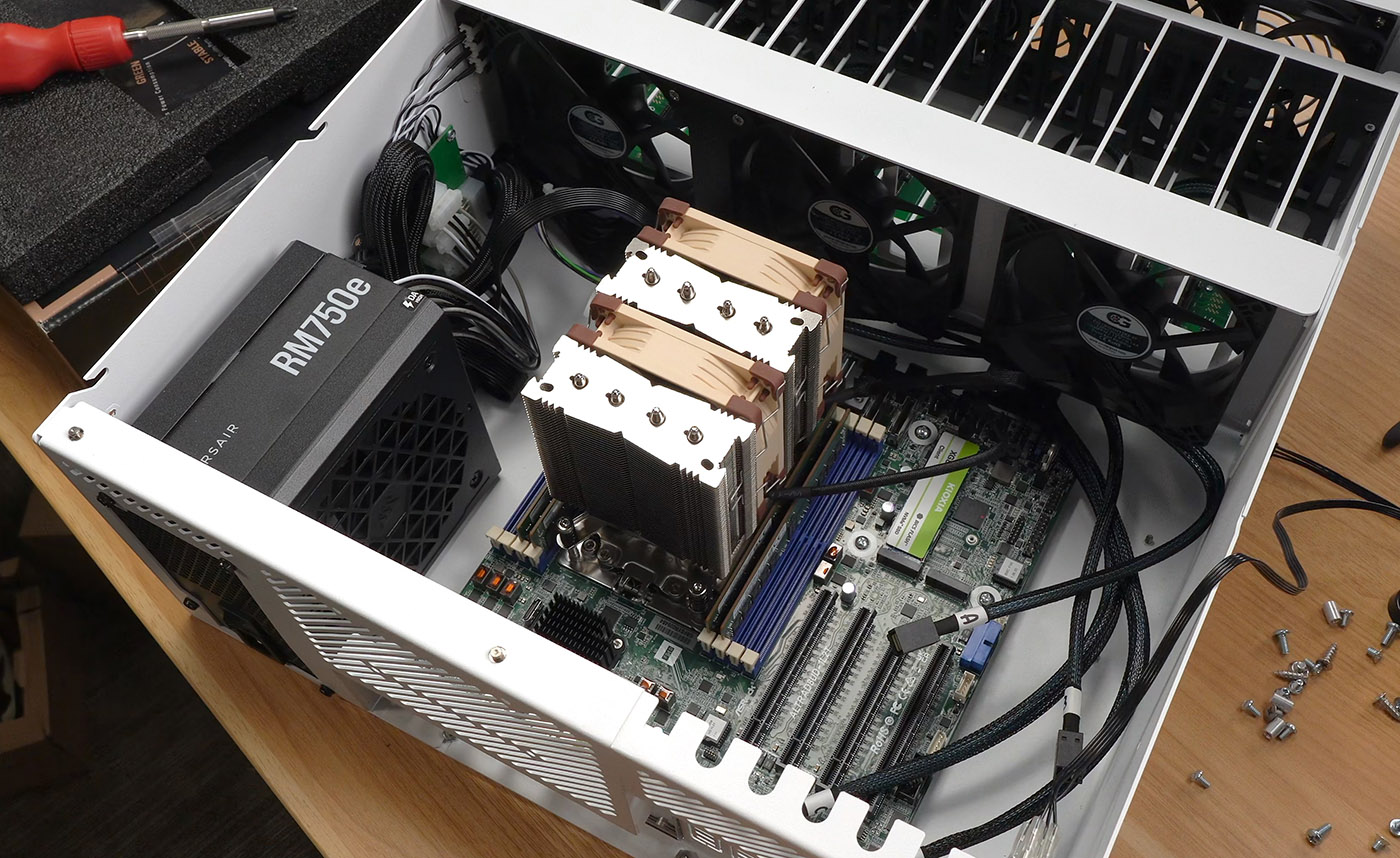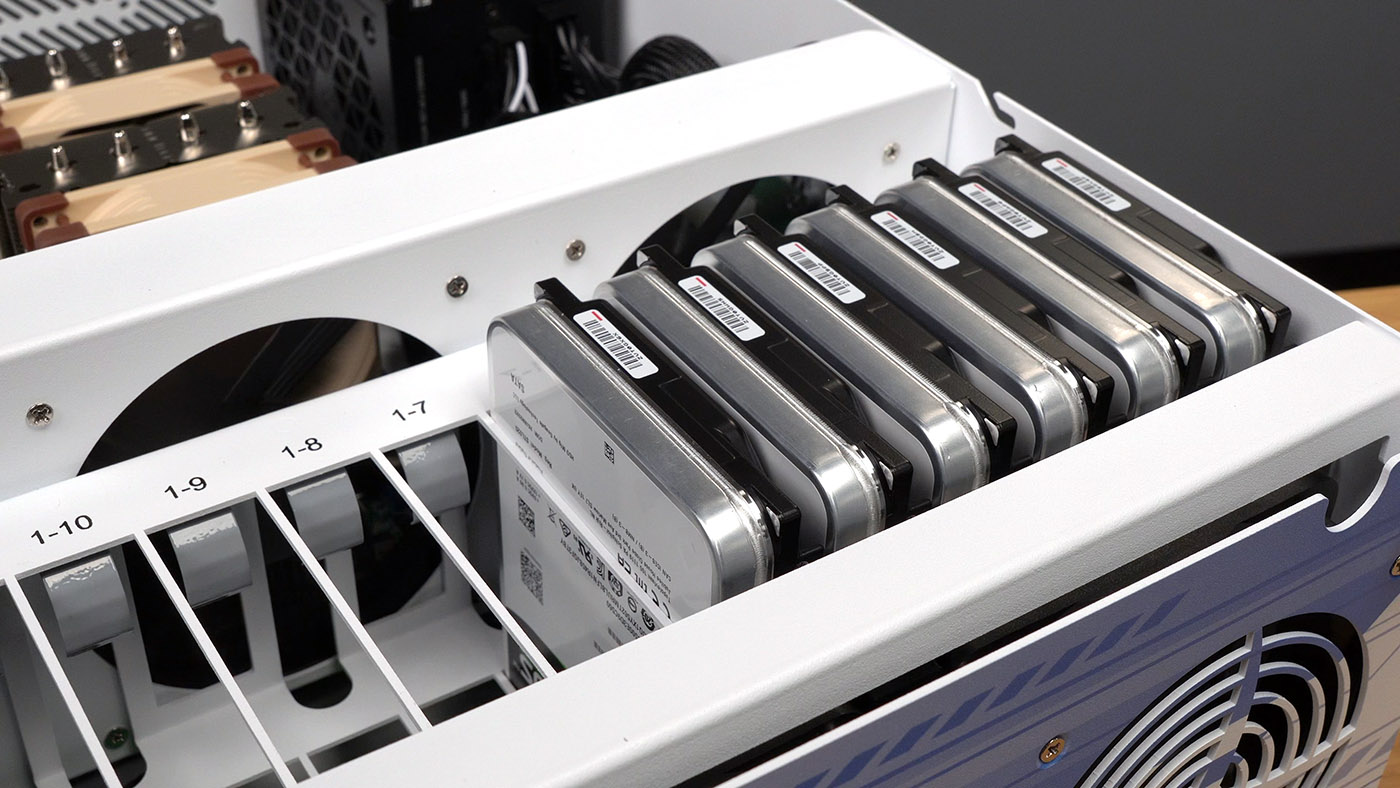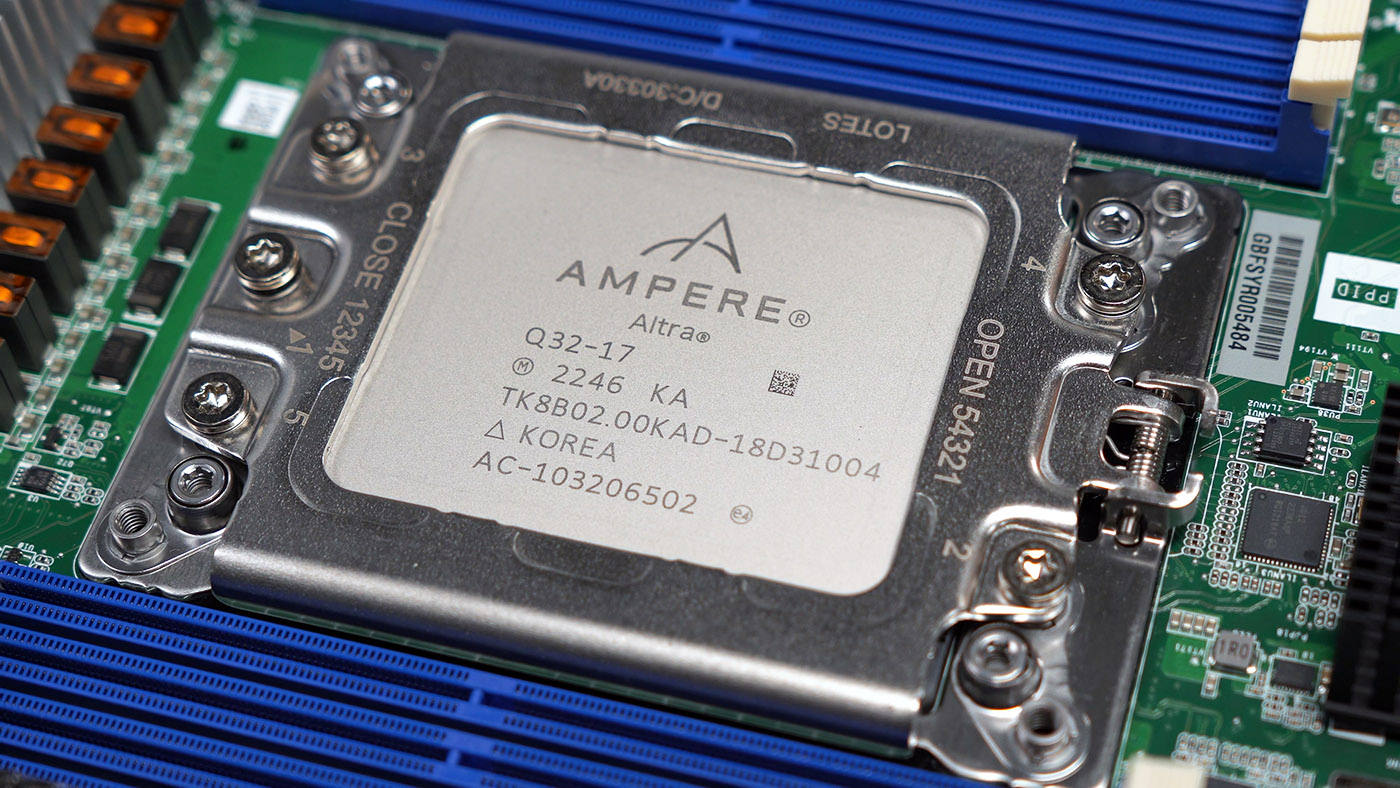
It's not cheap, but it's efficient. At least, that's my hope.
Over the past few months, I worked with a number of vendors to assemble what I hope will make an efficient but high-performance arm64 NAS. In the video embedded below, I've put together the following (some of these links are affiliate links):
- Motherboard: ASRock Rack ALTRAD8UD-1L2T (specs)
- Case: 45Homelab HL15 (backplane + PSU)
- PSU: Corsair RM750e (included with HL15)
- RAM: 4x Samsung 16GB 1Rx4 ECC RDIMM M393A2K40DB3-CWE PC25600
- NVMe: Kioxia XG8 2TB NVMe SSD
- CPU: Ampere Altra Q32-17
- SSDs: 4x Samsung 8TB 870 QVO 2.5" SATA
- HDDs: 6x Seagate EXOS 20TB SATA HDD
- HBA: Broadcom MegaRAID 9405W-16i
- Power: Comeap PCIe to 8-pin CPU adapter (to supplement the two CPU power plugs that came with the RM750e)
- Cooler: Noctua NH-D9 AMP-4926 4U
- Case Fans: 6x Coolerguys CG12025M12B2-3Y 120mmx25mm (included with HL15)
ServeTheHome covered the ASRock Rack ALTRAD8UD-1L2T motherboard, as well as the prototype Ampere Altra / Altra Max Noctua CPU coolers, but if you want some raw footage of the assembly process and some of my unfiltered thoughts, check out my video putting together this machine:
I won't be posting a full review of the system yet, because hardware is only half the equation—and even that isn't set in stone.
Note: I was provided hardware for this build by 45Drives, ASRock Rack, Noctua, and Ampere. So take my opinions with all that in mind. Besides the equipment, no other money exchanged hands and none of these organizations had any say in the contents of this blog post or my YouTube video.
My power budget for this machine is around 100W idle, and right now it sits just over 150W. I think I can get it down below 100W, and some of that will be achieved with hardware tweaks (and a few possible substitutions), and maybe some in software.

Regarding the hardware itself, here are some of my initial thoughts after completing this build:
- The 45Homelab HL15 case seems ideal for ATX and EATX motherboards. This 'deep micro ATX' motherboard is a bit cramped towards the plug-side... it works, but I think another cm or two of clearance would be better for it.
- I had an early unit off 45Drive's production run of the HL15, and my unit had a mis-wired power button; it seems like this problem was noted and fixed.
- The ASRock Rack motherboard came with OpenBMC, and it mostly worked great out of the box. I did experience a few bugs with the popout KVM window, but closing it and re-opening it always fixed the problems.
- The HL15 includes six CoolerGuys fans running at full speed (no PWM control). It would be nice if their fan power hub allowed PWM passthrough so the fans wouldn't run full blast if not needed... but that's not how it comes from the factory. It is billed as a 'quiet' system—and it is, compared to enterprise gear. But I may modify the cooling to make it half as quiet still, even though it'll go in a server closet.
- For RAM, make sure you buy RDIMM memory sticks, not UDIMM.
- If you're building your own system, and want to throw in any other parts than what I've listed, please take a look at Ampere's compatibility lists, as they have gone through the hassle of validating many different types of hardware on their platform already. If it hasn't been tested, that doesn't mean it won't work, but there's a better chance of success if you use things that are validated.

If you would like to replicate my build, at this point everything besides the Noctua fans is available at retail—see the links earlier in this post. The ASRock Rack motherboard keeps going in and out of stock at NewEgg, but I'm assured if you place a backorder, new batches are shipping regularly now.
An Ampere Altra-based system like the one I built isn't a performance champ, but for certain use cases where efficiency and tons of PCIe lanes are requirements, Ampere's existing platform may still pack a punch against AMD and Intel's similarly-priced CPUs.
Comments
A bit of a tangent, but are there options to buy an Ampere CPU standalone?
I checked Ampere's website and they listed OEMs and distributors that sell complete systems, but it would be neat if it was possible to (eventually) go and build a whitebox machine.
Right now, the only way to get them is bundled with systems or motherboards (like the Newegg link here, or from ADLINK). I really wish they'd sell the CPUs standalone, though that would also require some sort of retail packaging / documentation, which I don't believe they have available at this time.
The one time I got a standalone CPU from Ampere for testing it came in a giant carrier tray and a box the size of a few mini PCs!
Most probably I'm missing the point of this whole excercise... but how can be something suited as NAS be called 'efficient' at 100W (or even 158W)?
It's efficient enough if you take the number of HDDs he installed into consideration. Not to mention the CPU gets that many cores and those PCIE lanes
Not to be a negative Nancy, yes, this unfortunately is too pricey. That is a lot of kilowatt hours (at least in USA) worth of CPU. The whole issue right now is that low end intel/amd systems do not have enough pci lanes at the lower power usage.. not sure why? Is this a limitation of the combination of power/instruction sets to handle more pci lanes on X86?? Why doesn't a n100 board exist with 16 lanes of pci express? I wish to have my cake and eat it too it seems. I want 2 10G sfp+ ports and I want maybe 2 PCI 8x slots and I want it to be lower power... I don't want or need more than 2 on-board sata ports, let me get my own cards so I can upgrade.. AND I want it all for less than 500 bucks (for board, memory and cpu at least).
I stopped counting at $7k price. I think you've long since jumped the shark. Every post now is just "I was provided hardware for this build" clickbait.
Not every post needs to fit into your use case. It's OK for Jeff to write on a range of things.
On top of that, I'm not sure where that comment gets the idea that every post on my blog is about things provided to me :P
Looking back at the last 10 blog posts, 1/10 of them had any parts that were provided (note: parts were provided for a project I'm working on—nothing in the post was a paid advertisement). I'd say 10% is not that bad for someone to be able to ignore posts in an RSS feed. I certainly subscribe to many sites where entire posts are outright paid-for advertisements, but I understand the authors of those blogs rely on that for income, so I happily scroll past them :)
I've been looking at nearly the exact setup. Thanks for doing the early leg work.
My biggest question is performance for iSCSI block storage on SSDs for VMs/containers but I can't find any existing performance data